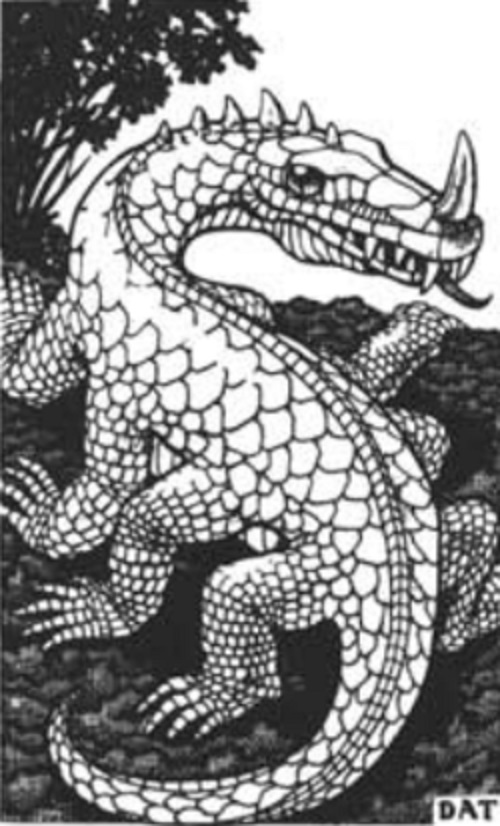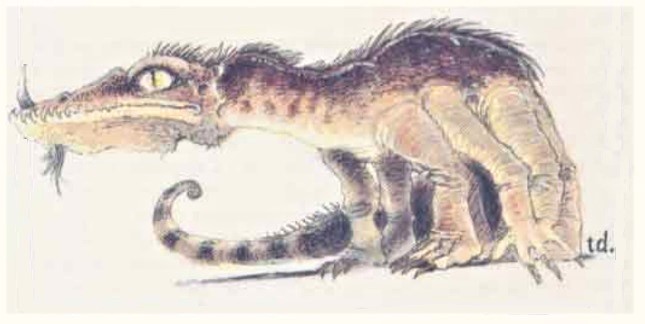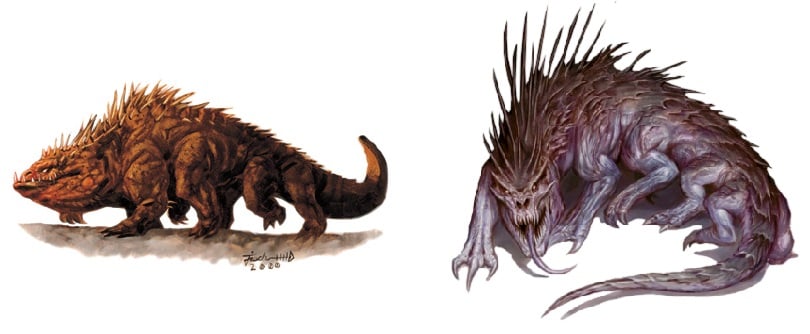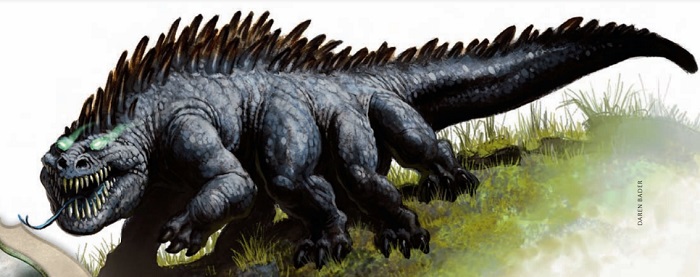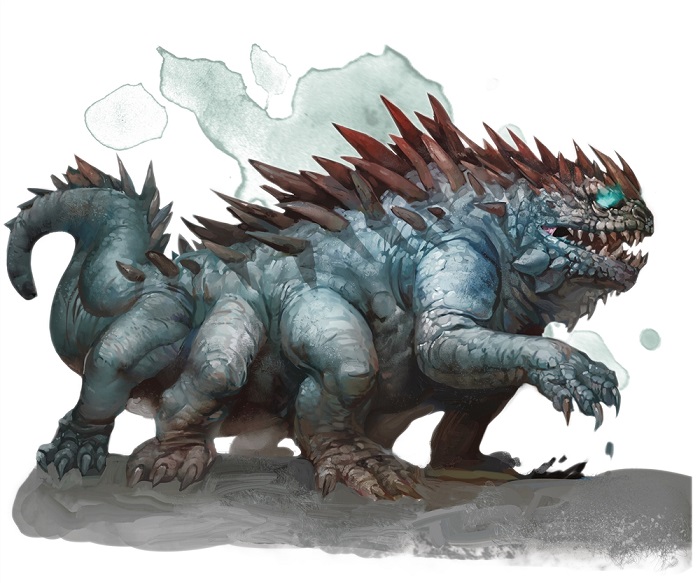D&D Monster Spotlight: It’s Time to Embrasilisk the Basilisk
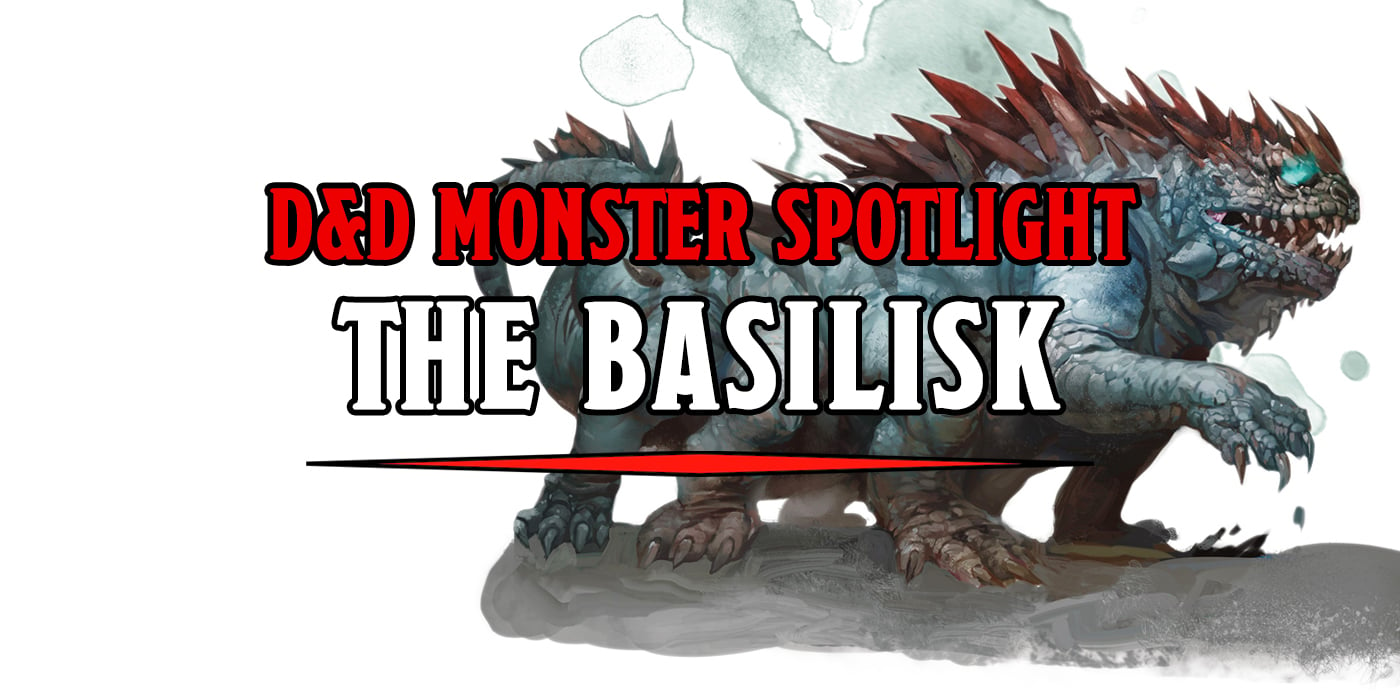

This monster won’t be slithering through your school’s pipes and terrorizing children, and maybe that’s for the best. It’s the D&D Basilisk.
Sometimes depicted as snake-like, sometimes bipedal, other times multipedal, the basilisk is a legend that goes back to at least the 1200’s. They are the “king serpent,” and said to be hatched when a cockerel incubates the egg of a toad or serpent. The opposite parentage would bring about a cockatrice.
First Edition
With a long and storied history, Basilisks in D&D start out so interesting and fun from the start. Even though first edition only ever gives us a short paragraph about each monster, everything they tell us about this creature promises to be interesting in a game. They have eight legs, but they’re slow. They have strong jaws, but their major weapon is their deadly petrifying gaze. Like Medusa, they can be killed with their own gaze and a mirror like reflective surface. They see in the astral and ethereal planes and do different kinds of damage on each. Basilisks are wild.
Second Edition
2E somehow makes the Basilisk much worse and much better simultaneously. Second Edition introduces the Greater Basilisk, a larger version of the monster we met in 1E. They are typically seen guarding some kind of treasure. Here the Basilisk gains a poison slash and breath, so it can not only petrify you, it poison you as well. Additionally, its breath smells so foul that creatures within five feet must roll saving throws each round of exposure. This is all well and good and makes the Basilisk a more threatening foe to face, but 2E also explains that the basilisk with its oddly-shaped eyes are nearsighted. They have a difficult time seeing farther away than ten feet. Its gaze is still effective and deadly up to fifty feet, but it must first meet your eyes… and that may only ever happen by accident. But the Basilisk with some corrective lenses? Unstoppable.
Third Edition
Editions three and three point five keep the Basilisk by-and-large the same while continuing to add flavor details that somehow make it both less and more scary. The art in this edition finally makes them a creature that I would not want to encounter in the wild. But they are not shy to point out how lazy and disinterested in combat the Basilisk is.
“Intruders who flee a basilisk rather than fight can expect, at best, a halfhearted pursuit.”
They lie in wait for prey, hunt, are capable of eating their petrified victims, and sleep off their heavy meals. If the petrifying gaze wasn’t a factor, I would feel comfortable saying that I’ve owned lazy dogs that sound about as stinky and threatening as the basilisk is described. Three point five also introduces the abyssal greater basilisk, a cousin of the standard Sasilisk who lives in the barren wastelands of the Abyss. The save DC against the Abyssal Greater Basilisk’s petrifying gaze is DC21 and their natural weapons are treated as magic weapons when overcoming damage reduction.
Fourth Edition
In 4E the basilisk gets a little weirder and generally more dangerous with the Venom-Eye Basilisk who has a venomous gaze as opposed to a simply deadly one. Green mist comes out of their eyes now, doing poison damage to anyone within range. The Stone-Eye Basilisk can still petrify its victim on sight and is now a little more difficult to avoid. But I think we can all agree that the mental image of poison green mist coming out of something’s eyes it’s almost distractingly disturbing.
Fifth Edition
The misty-eyed D&D Basilisk of 4E doesn’t come back this time around as the creature is pared down to its basics. Their petrifying gaze still has the ability to be turned back on itself with a reflective enough surface, as is the Basilisk’s ability to eat the stony form of its victims. 5E goes on to explain that the rock turns back to flesh in the beast’s gullet. This makes the Basilisk and the fluids it produces something alchemists would prize. Additionally, basilisks can be captured, domesticated, and trained by somebody who knows to avoid its eyes and has a very specific taste in guardian beasts. By all means, take this information and ruin your DM’s entire day with it.
Which basilisk is your preferred type of petrifying monster? Will your character be on the lookout for eggs so you too can have a strange and lazy guard lizard? Let us know in the comments!
Happy Adventuring!

